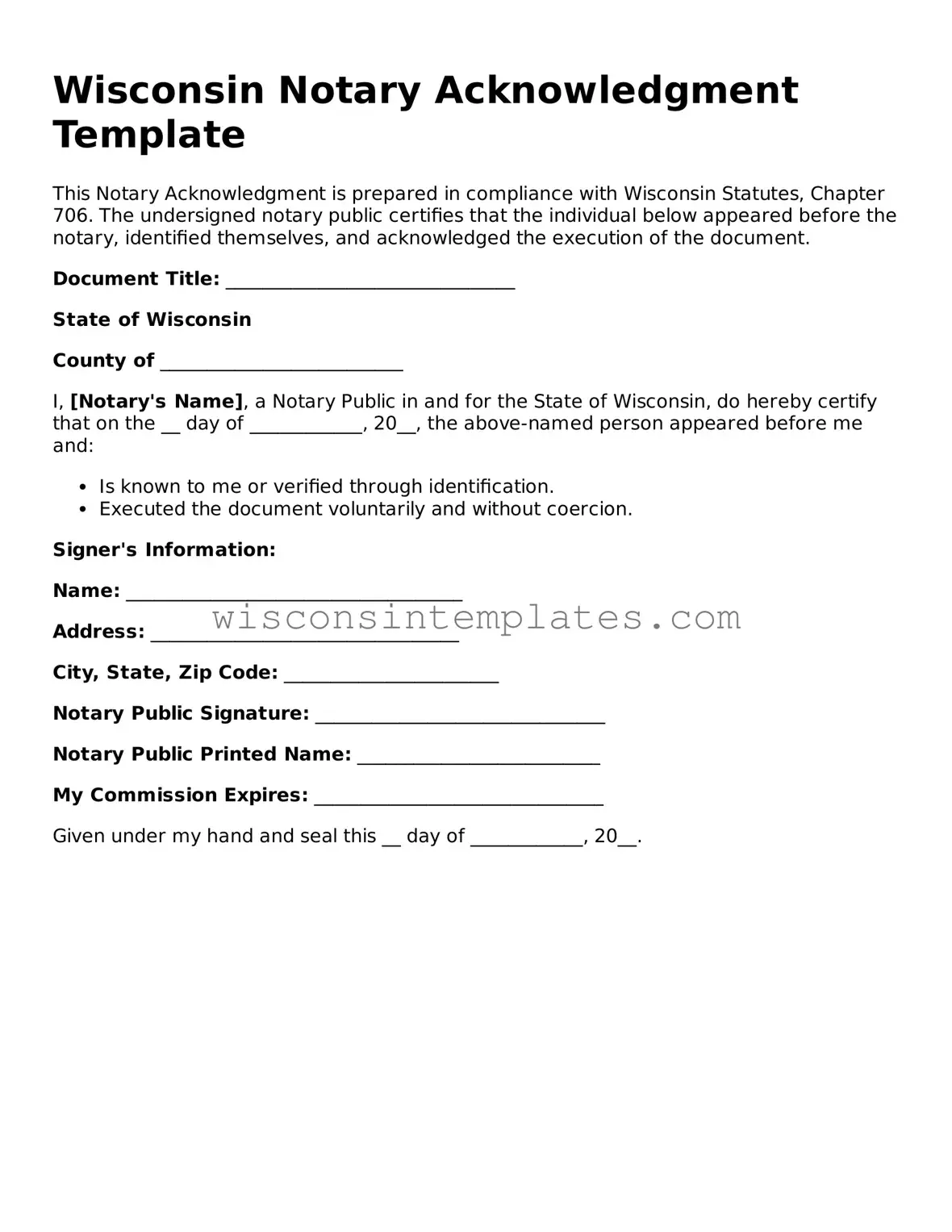In the realm of legal documentation, the Wisconsin Notary Acknowledgement form plays a crucial role in affirming the authenticity of signatures on various documents. This form is essential for individuals seeking to ensure that their signatures are verified by a notary public, providing an extra layer of security and legitimacy to important transactions. Typically, it is utilized in situations involving real estate transactions, powers of attorney, and other legal agreements where the identity of the signer must be confirmed. The form includes specific sections that require the notary to detail the date of the acknowledgment, the identity of the signer, and the notary's official seal, all of which contribute to the document's validity. By using this form, individuals can protect themselves against potential disputes regarding the authenticity of their signatures, thereby fostering trust in legal proceedings. Understanding the nuances of this form is vital for anyone engaged in legal transactions in Wisconsin, as it ensures compliance with state requirements and enhances the overall integrity of the documentation process.
